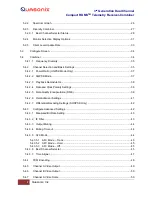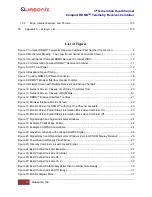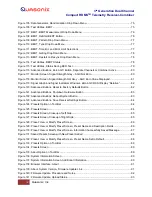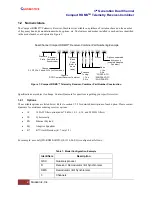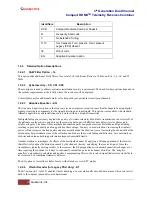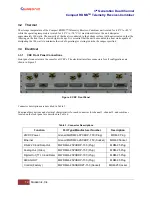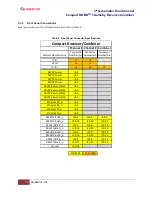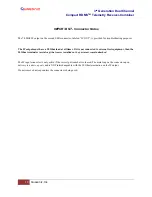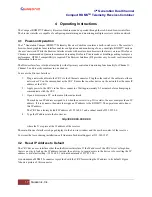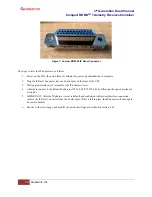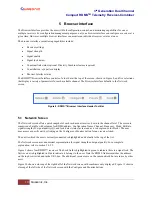
3
rd
Generation Dual Channel
Compact RDMS
TM
Telemetry Receiver-Combiner
4
Quasonix, Inc.
Convolutional encoding is a form of legacy forward error correction. Like LDPC, it adds redundant information at
the transmitting end of a telemetry link and then uses that redundancy to detect and correct errors at the receiving
end of the link. Use of convolutional encoding requires a matching Viterbi decoder in the receiver to extract the
source data. The decoded data rate is half the encoded data rate. The receiver has two independent decoders, one for
in-phase (“I”) data and one for quadrature (“Q”) data. For BPSK, only a single decoder is used. Each decoder is
compatible with the convolutional encoding described in the “Consultative Committee for Space Data Systems,
Recommendation for Space Data System Standards, TM Synchronization and Channel Coding, CCSDS 131.0-B-2,
Section 3.”
Viterbi decoding is used to decode constraint-length (K) 7, rate I 1/2, G2-inverted convolutional-encoded data.
The purpose and benefits of convolutional encoding are similar to LDPC. However, convolutional encoding requires
more bandwidth than all but the lowest-rate LDPC codes, and its error-correcting performance is inferior to LDPC.
Therefore, LDPC is the preferred forward error correction if possible.
The Viterbi Decoder control requires the K7 option, and the RDMS must be set to one of the following PSK modes:
BPSK, QPSK, AQPSK, AUQPSK, OQPSK, or UQPSK.
Viterbi decoding and Reed-Solomon decoding can be used together or separately.


